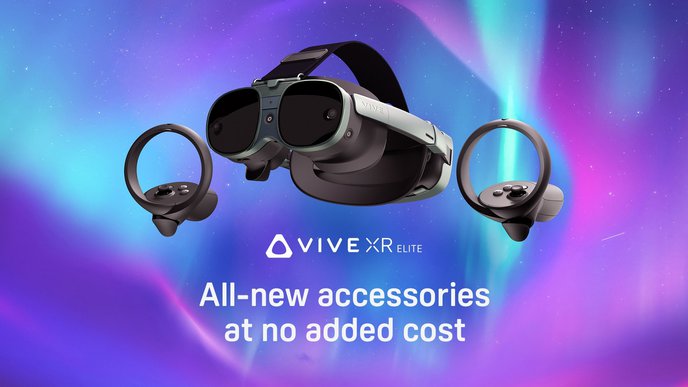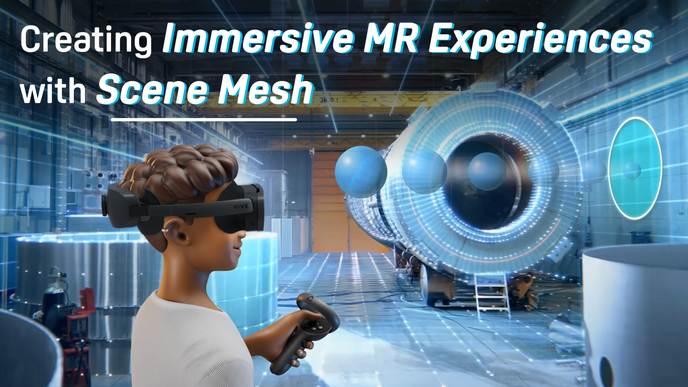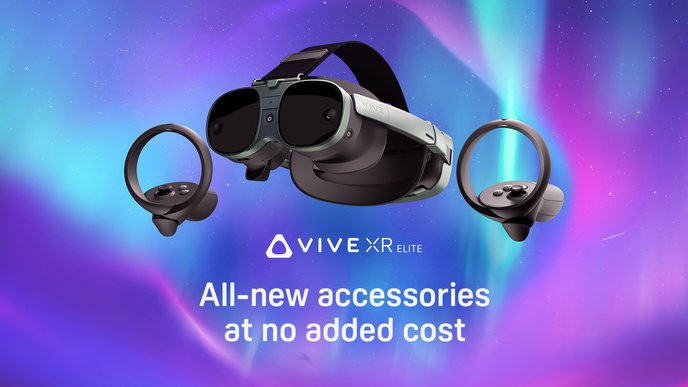VR Headset Displays, Resolutions, and Other Specs - VR 101

Headsets
10-minute read
You’ve heard about virtual reality — maybe even considered trying it out for yourself. A VR headset is what you need to start exploring virtual reality and discover its many wonders.
But how can you tell which VR headset is best for you? You’ll need to become familiar with the specs of a VR headset to understand what level of immersion it can offer you. And since virtual reality is very much a visual experience, a good place to start is learning about the display. That means understanding terms like resolution, refresh rate, and field of view.
In this post, the second in our VR 101 series, HTC VIVE explains what goes into making VR a true feast for the eyes. You’ll discover what different features of a headset mean and how they can shape your view of the virtual world.
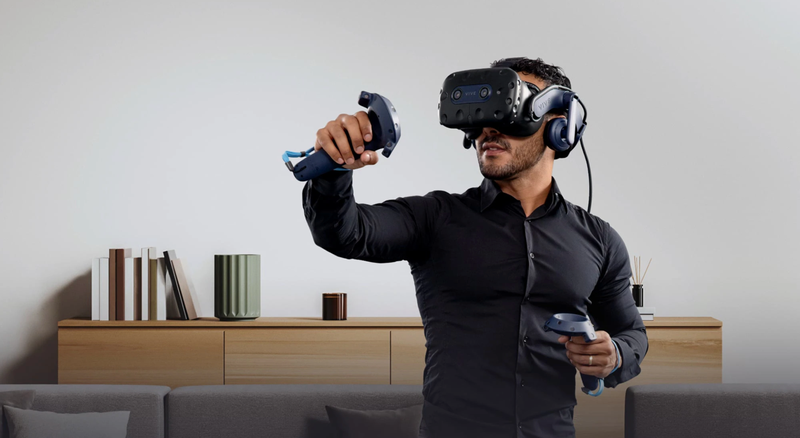
Virtual reality is filled with all sorts of incredible sights.
Read on to learn about what goes into making the best VR headset display!
Missed part one of this series? Check it out here.
What is an HMD?
A head-mounted display (HMD) is a device worn on the head that features one or two displays. VR headsets, VR glasses or goggles, and even mixed reality headsets are all kinds of HMDs.
An HMD is different from a handheld display (like the screen on your phone) or a display you may have in your home (such as a TV). Its closeness to your eyes offers a more immersive experience, putting the physical world out of view and showing you a virtual simulation instead.
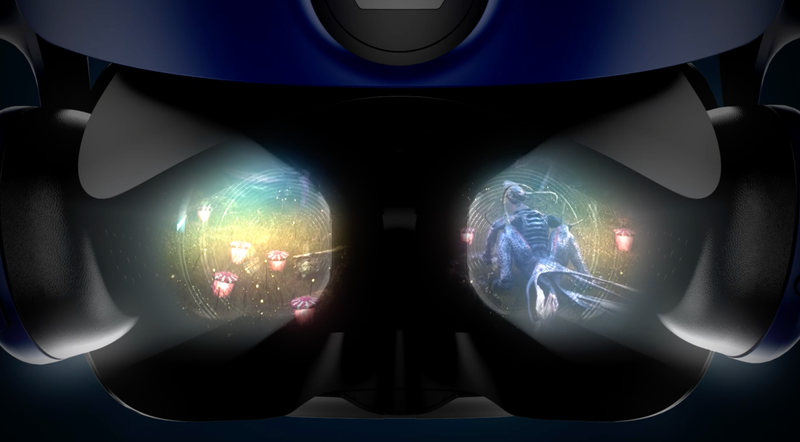
HMDs like the VIVE Pro 2 offer an exceptionally high level of immersion.
The specific kind of screen used in an HMD varies across devices. Below are some of the more commonly used screen types and their unique qualities:
- Organic Light Emitting Diode (OLED): OLED screens are made of a thin film of organic compounds that light up when an electric current is applied to them. They thus have individual pixels that can be turned off to provide deeper blacks or turned on to produce vibrant colors with high contrast.
- Liquid Crystal Display (LCD): LCD screens feature a layer of liquid crystals illuminated by a backlight. They are a more affordable way to offer high resolution images but may have lower color contrast than OLEDs.
- Active-Matrix Organic Light Emitting Diode (AMOLED): AMOLED screens consist of an array of thin-film transistors (TFTs), which are essentially tiny switches that allow individual pixels to be turned on and off with better control than is possible with OLEDs. AMOLEDs also offer deep blacks and vivid colors but with higher contrast and faster refresh rates.
What is resolution?
A VR headset’s resolution is the number of pixels that it can display at a time. It is typically expressed as two dimensions (width x height) per screen.
The VIVE Pro 2’s resolution, for example, is 2448 x 2448 per eye, which means that each of its two displays shows 2448 pixels horizontally and 2448 pixels vertically, for a combined resolution of 4896 x 2448. (The two screens placed side by side create a wider view, but the height of the combined view remains unchanged.)
The more pixels that can fit on a screen, the more details that can be shown within that space. Thus, a higher resolution may allow for images with higher sharpness.
What is refresh rate?
Refresh rate means how many times per second the image on an electronic display is replaced by a new image (i.e., how often it is refreshed). It is measured in Hertz (Hz).
Remember that a computer screen only shows one image at a time. Having a series of images shown in rapid succession creates the illusion of movement.
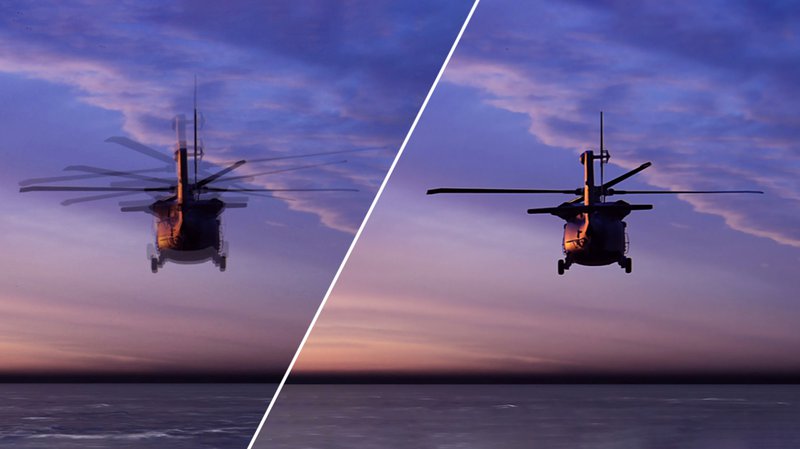 Motion in virtual reality breathes life into simulated environments.
Motion in virtual reality breathes life into simulated environments.
Here’s a simple example: Imagine that you are looking at the image of a red balloon on a screen. If, in the span of one second, it first appears at the bottom of the screen, then again at the center, and finally at the top, you might perceive that the balloon is floating upwards. But the screen itself has not moved – only the images shown on it have changed.
Now imagine that your series of balloon images includes more than just the three mentioned above. For instance, you see 60 images in succession that show the balloon’s position transitioning from the bottom to the top, and the total time elapsed is still just one second. This movement would look less like stop-motion animation and more like real life.
Assuming the screen is capable of showing those 60 frames in one second, the refresh rate in this new example would be 60 Hz. The higher the refresh rate of your VR headset’s display, the more images it can show per second and the more well-defined fast-moving objects will appear. That means a drastic reduction in motion blur, which in VR could make you very uncomfortable!
A high refresh rate can also help reduce latency. In virtual reality, latency refers to the delay between your real-world movements and the change in what you see in VR. For example, if you’re wearing a VR headset and look up, you can think of latency as the time it takes for the display to show you the virtual sky. Shorter latency does a better job of convincing you that the virtual experience is real and can be achieved through a good refresh rate and effective tracking — a topic we discuss in part three of this series.
![]()
Hand tracking looks and feels more natural on a VR display with a high refresh rate.
What is field of view (FOV)?
Field of view (FOV) is how much of your surroundings you can see at once. It is expressed as an angle in degrees. Since being able to see more in VR brings us closer to how we perceive the real world, a higher FOV is better for immersion.
FOV can refer to the vertical or horizontal angle visible to each individual eye – for example, the angle from your left eye’s pupil to its sides. This kind of range, however, only represents a monocular viewing field.
In VR, FOV always refers to the combined view from both eyes. It is the horizontal measure of how much of the virtual environment is viewable to you at one time.
When facing directly forward, most humans have a field of view of about 210°, but this includes the peripheral vision of each eye and varies from person to person. Only about 114° can be seen by both eyes simultaneously — this is known as the binocular viewing field.
The range of what can be considered “seen clearly” is also somewhat subjective. There is actually no standardized way of calculating field of vision in virtual reality.  FOV plays an important role in how you perceive your virtual surroundings.
FOV plays an important role in how you perceive your virtual surroundings.
In fact, anatomical differences can cause you to observe a different FOV than others wearing the same VR headset. A person whose pupils sit closer together might perceive a wider FOV than you!
Other factors that can affect FOV include the distance between your eyes and the lenses and the size of the display itself. To an extent, a bigger, closer display blocks out more of the real world around you and helps create immersion.
What is interpupillary distance (IPD)?
Interpupillary distance (IPD) is the distance between the center of each eye when looking straight ahead. It is often measured in millimeters.
VR headsets may allow you to adjust how close their lenses are to each other so that their focal points align precisely with your pupils. Calibrating the lenses to match your unique IPD is important because it affects the level of visual clarity you get when you look through them. 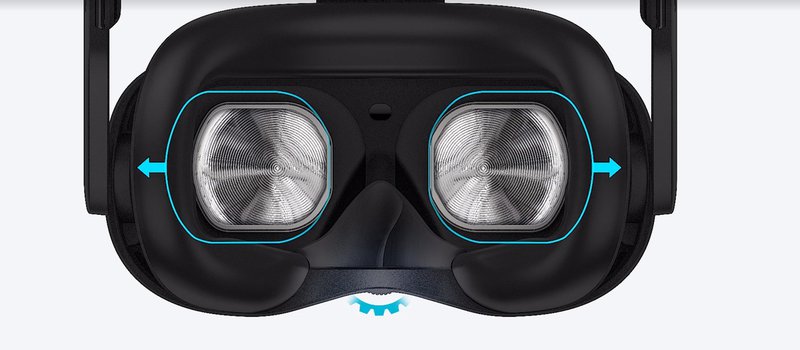 VIVE Focus 3’s ergonomic design includes an IPD adjustment for enhanced immersion.
VIVE Focus 3’s ergonomic design includes an IPD adjustment for enhanced immersion.
Besides minimizing distortion and discomfort, using the correct IPD also offers you a better 3D experience. The illusion of depth, after all, is created by delivering a slightly different image to each eye, and IPD is used to calculate what each eye should see.
Failing to align a VR headset’s lenses with your pupils (or not having any kind of IPD adjustment available in the first place) can result in blurry images and faulty depth perception. That’s a recipe for eye strain.
What are pixels per degree (PPD)?
Pixels per degree (PPD) means the number of pixels present in a horizontal line of the VR headset’s display divided by its field of view. PPD is a measure of pixel density, which can give you an idea of how clear an image on the display is.
Recall that having more pixels in a given area allows for more details to be shown there. A greater number of pixels per degree is associated with more well-defined visuals and thus a higher level of immersion.
Similarly, a display with a lower PPD may be prone to blurring, pixelation, or the screen door effect, which is when the dark, empty spaces between pixels become visible, making the virtual world appear as if it’s being viewed through a mesh screen.
While resolution and PPD are positively correlated (more total pixels also means more pixels on any given line), PPD and FOV are negatively correlated — having more degrees in your field of view means that the pixels on the display must be spread out over a wider space, reducing their density. 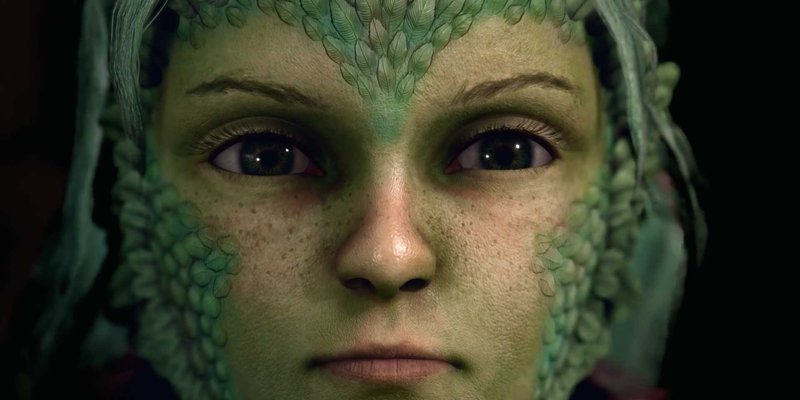 Packing more pixels into the VR display can make the finest details clearly visible.
Packing more pixels into the VR display can make the finest details clearly visible.
What is a GPU?
A graphics processing unit (GPU), also called a graphics card, is a special kind of processor designed to perform the many complex calculations needed to render images and video. It is generally more powerful and efficient than a central processing unit (CPU).
VR headsets depend on GPUs to handle their high-resolution 3D graphics and related elements like lighting and shadows. The more sophisticated a VR device’s GPU, the more impressive its graphics can be.
Indeed, a display with a high refresh rate is not enough on its own to deliver fluid, immersive visuals. It must be paired with a GPU capable of supplying it an equally high number of frames per second. Powerful GPUs offer higher frame rates, delivering smoother, more realistic graphics while reducing the likelihood of motion sickness. 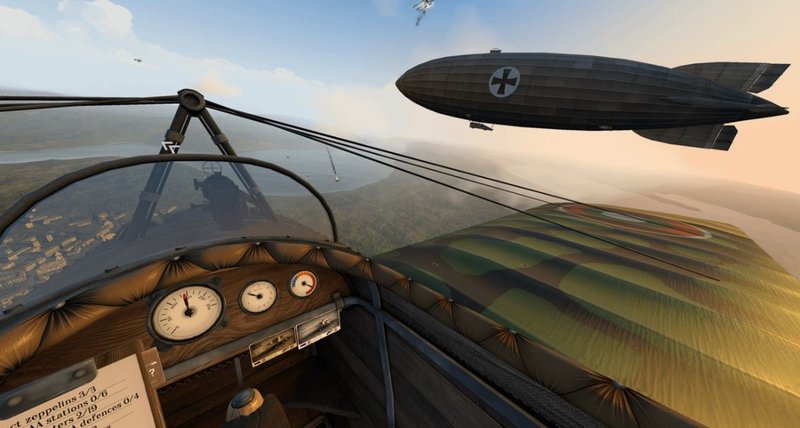 VR graphics may be demanding on hardware, but they’re a marvel to look at.
VR graphics may be demanding on hardware, but they’re a marvel to look at.
What are VR lenses?
VR lenses are lenses specifically designed to magnify and focus the images displayed on a VR headset’s screen. Accordingly, they sit between your eyes and the display itself.
You might be wondering why VR headsets have lenses in the first place. Couldn’t you just put the screen close to your eyes?
If you’ve ever tried wearing a phone or tablet on your face to experience virtual reality, you probably already know the answer to this question. While you could technically put a screen in front of your eyes and try to use it as a VR headset, you’d quickly find that it takes up just a small portion of your field of view. Even worse, having a display too close to your eyes may make it very hard to see clearly!
VR lenses have a carefully calibrated shape and position in the headsets they occupy so that they can bend light from the display to give users a clear, comfortable, and refreshingly wide view of the virtual world.
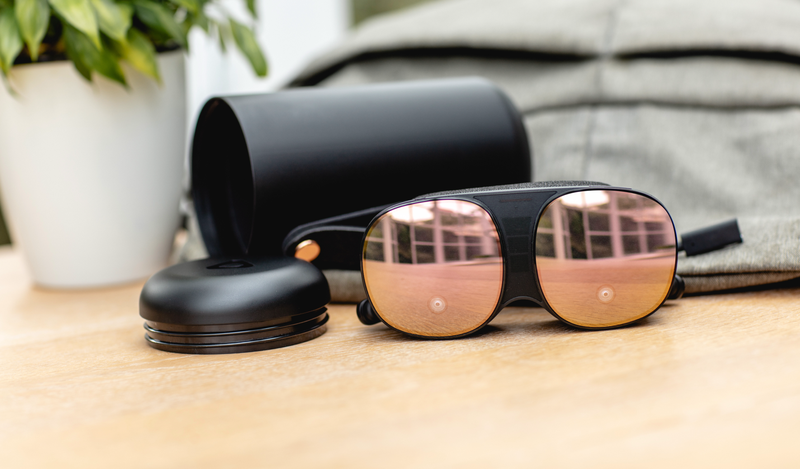
VIVE Flow’s pancake lenses help contribute to its lightweight, glasses-like form.
Like displays, VR lenses come in a variety of types, with the most common being Fresnel lenses. These consist of a series of rings cut into them that refract light while reducing volume and weight. You can think of them as smaller and more sophisticated lighthouses.
Pancake lenses, meanwhile, are a newer and even more compact kind of lens that are essentially many lenses folded together within a thin piece of glass or plastic. This design requires more light use than Fresnel lenses but results in an unbeatable reduction in weight — a prominent feature of VR glasses.
What are diopter dials?
Diopter dials are dials around a VR device’s lenses that allow you to adjust its magnification.
The word diopter refers to a unit of measurement used to express a lens’s optical power and is defined as the inverse focal length of a lens in meters. Focal length is simply the distance between the center of a lens and the point at which objects seen through it are brought into focus.
Let’s take an example. Looking through a 2-diopter lens, objects within a half meter come into focus. The focal length of a 2-diopter lens is ½ m, which is the inverse of 2. It follows, then, that the focal length of a 3-diopter lens is 1/3 m, which means objects come into focus at a closer distance.  Diopters give you an idea of how far away objects can be brought into focus.
Diopters give you an idea of how far away objects can be brought into focus.
Many people wear prescription lenses to bring objects that are further away into focus. The more magnification that is needed, the higher the diopter value of the lens.
Some devices like the VIVE XR Elite feature stepless diopter dials for their lenses. Turning each diopter dial will gradually magnify the image of the virtual world seen through the lens it surrounds. In many cases, this lets the wearer see clearly in VR without having to wear their corrective lenses. 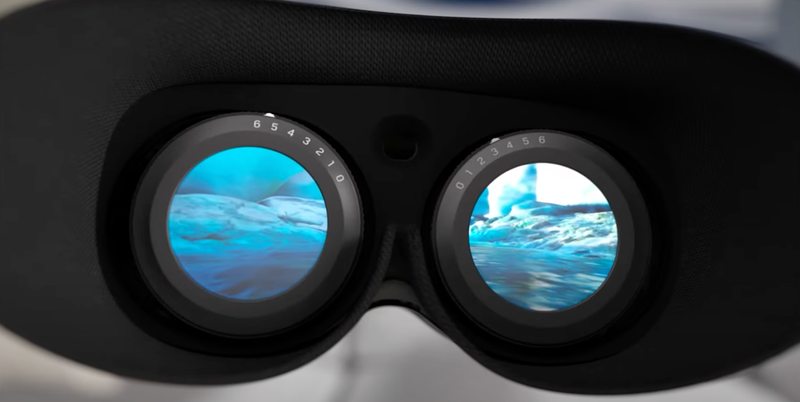
VIVE XR Elite’s diopter dials are ideal for short-sighted VR users.
While a VR headset’s diopter dials cannot correct all vision problems, they can offer some users a more comfortable viewing experience.
How do I choose the best VR headset display?
The best VR headset is the one that most closely matches your particular needs. Now that you have an idea of what specs and features relate to the visual experience of VR, you can compare different VR headsets to see which has the sort of display you’re looking for. 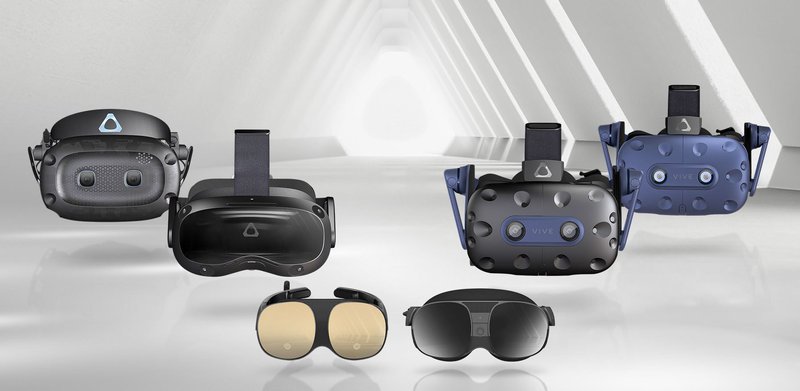 Whether you value power or portability, VIVE has a VR headset for you.
Whether you value power or portability, VIVE has a VR headset for you.
But the terms we’ve covered in this blog post can only tell one part of the story. What you see in virtual reality is just as important as how you see it, and both relate to the kinds of interactions you can have with the virtual environment.
In the next post in our VR 101 series, we’ll explore how immersion in VR is created by your movements in the real world. Join us for an in-depth look at the many kinds of tracking in virtual reality!
